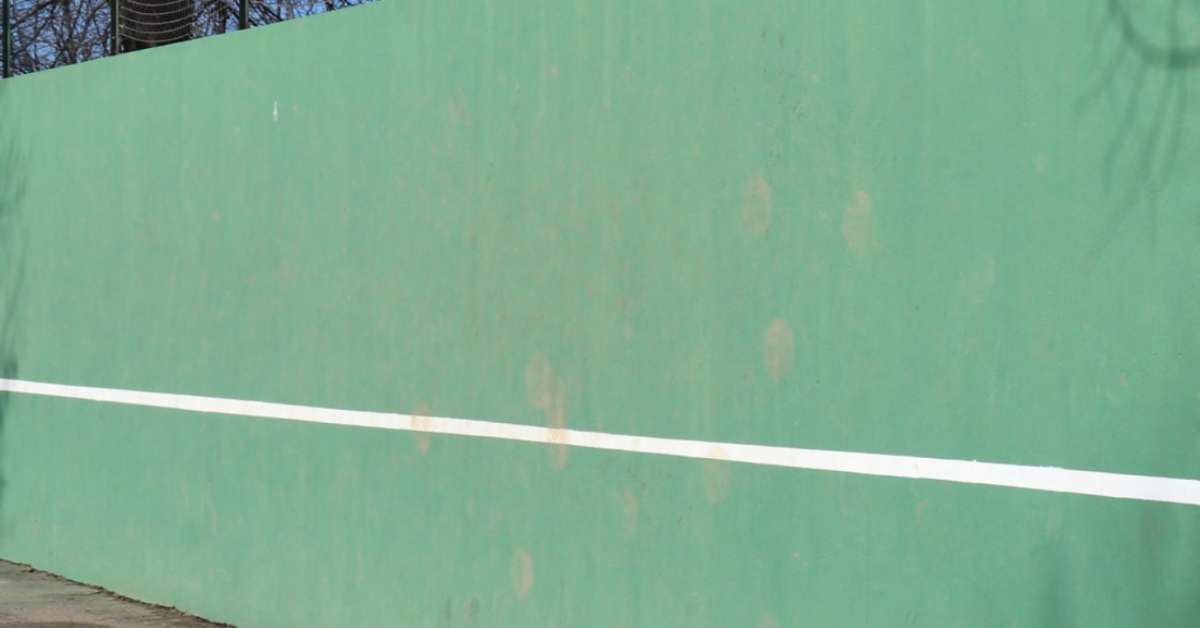When you’re looking to enhance your tennis skills, it’s ideal to train with a partner, but sometimes you may find yourself without one. In such cases, practicing on your own can be an excellent way to take your game to the next level.
To optimize your solo training sessions, there are several methods to consider. Utilizing a ball machine is perhaps the most effective approach, as it can help you refine your groundstrokes, volleys, and overhead shots. If a ball machine isn’t available, you can always hit against a wall or backboard. Additionally, you can self-feed balls to work on your groundstrokes or focus on your footwork and overall fitness.
While it’s not as beneficial as when you play tennis with an opponent, there’s definitely a time and place for solo tennis practice. It can assist you in establishing consistency and refining your technique.
- Strategies to Improve the Mental Side of Your Game
- Improve Your Tactical Approach
- Ball Machine Practice
- Shadow Your Strokes
- Hitting Against A Wall
- Work On Your Serve
- Fitness Training
- Develop Proper Footwork Skills
- Tennis Rebounder Net
- Draw Inspiration From Other Players
- Master Your Groundstrokes with Self-Fed Balls
- Pros Of Practicing Tennis Alone
- Cons Of Practicing Tennis Alone
- Related Post
Strategies to Improve the Mental Side of Your Game
In tennis, a significant part of the battle is fought within our minds. The scoring system, which is unique to tennis, allows for a player to have the potential to either win or lose, regardless of the score. Nevertheless, the nature of the sport puts a substantial amount of mental stress on tennis players, and it is those who can manage their emotions the best that tend to excel.
Numerous pieces of literature have been written on the subject of the psychological aspect of tennis, including the highly recommended “Sports Psychology Tennis,” which provides a solid foundation for improving one’s game. You do not necessarily need to be on the court to learn techniques that can aid you in winning more matches; instead, you must concentrate and devise strategies to enhance your performance.
While your opponents might spend their off-court time relaxing, you can focus on honing your mental skills by practicing alone. Take small steps today and learn how to deal with high-pressure situations!

Improve Your Tactical Approach
Improving your performance in tennis can be achieved by implementing effective tactics, and the good news is that you don’t have to be present on the court to learn them.
Tennis is a sport where a slight difference can determine the outcome of a match. It is possible to lose even if you win more points than your opponent. Therefore, utilizing the correct tactics in any given situation can greatly impact the outcome of a game.
By using tactics that stack the statistics in your favor, you can make small yet significant changes that can ultimately lead to a better outcome. Even from the comfort of your own home, you can learn which serves provide the best chance of winning a point or where to position your first volley for optimal results.
The mental aspect of tennis is just as important as the physical, so honing your tactical approach to the game can be practiced alone, away from the court. With the right knowledge, you can make a huge difference in your performance, even without stepping onto the tennis court.
Ball Machine Practice
When it comes to practicing tennis by yourself, the most expensive option is the use of a tennis ball machine. A ball machine is a device that feeds tennis balls to the player from one side of the court, allowing for continuous practice without the need for a practice partner.
The beauty of a ball machine lies in its ability to customize the game to suit the player’s needs. Depending on the machine, the player can adjust the speed, spin, trajectory, and direction of the balls, enabling them to practice specific shots or engage in a cardio-type workout.
However, it is important to note that tennis ball machines come with a high price tag, with entry-level models starting at around $1000. Nevertheless, there are several popular options available in the market that offer great features and functionality.
The decision to invest in a ball machine ultimately depends on your usage and disposable income. If you are a regular tennis player and have the financial means to purchase one, a ball machine can be a valuable addition to your training equipment.

Shadow Your Strokes
It can be challenging to focus on perfecting your swings and footwork while also dealing with the complexities of the ball. This is where shadow swings come in when playing tennis by yourself. Shadow strokes involve practicing your swings and footwork without a ball, allowing you to focus solely on your mechanics. Taking the ball out of the equation allows you to concentrate on the correct fundamentals towards an imaginary ball, getting into position, and swing with precision.
While it’s not the same as hitting an actual ball, practicing shadow strokes can be incredibly beneficial for your tennis game. It helps you get a better feel for your swings and footwork, keeping you sharp and in top form even when you don’t have access to a court.
Hitting Against A Wall
One of the most significant advantages of a tennis wall is that it allows you to practice hitting alone. You can create a variety of solo tennis drills to improve your technique and get as many shots as possible. Alternatively, you can use the wall to focus on specific areas of your game, such as perfecting your fundamentals, improving your contact point, preparing early, or working on fitness.
To make the most of your time with the practice wall, structure your session or plan ahead of time. Decide which skills you want to work on and create tennis drills to keep you engaged and challenged throughout your practice. Before starting, it’s important to warm up properly. You can begin by hitting the ball closer to the wall as if you were rallying from the service line and aiming into the service box.
When hitting against the wall, it is critical to aim consistently at a specific spot on the wall. You can even make a target out of low-stick painter’s tape.
When hitting against the wall, it’s crucial to focus on good stroke mechanics and maintain some shoulder rotation on your groundstrokes. A tennis wall can be unforgiving if you’re not careful, causing you to become pushy and lose form as it returns the ball quickly.
Work On Your Serve
It is crucial to master your serving skills in order to stand a chance in tennis. Building a step-by-step progression for your tennis serve mechanics is the key to success. Begin by perfecting your flat serve, the most fundamental type of serve. Once you have a solid grasp of it, you can learn other serve variations.
One of the best things about practicing your serve is that you do not require an opponent to do so. During practice, you can track the scores you make or miss and keep score. You can count a serve-in as a point for you and a double fault as a point against you. You can deduct two or more points for every double fault to challenge yourself a little.
If you have cones available, use them as a target to aim for within a particular distance. Begin at a slow pace and work toward consistency. It is essential to cultivate your serving technique correctly by learning the proper form.

Fitness Training
Imagine facing an opponent of equal tennis skill and game style in a match where every move counts. While technique and strategy play a significant role in the game, the fitter athlete usually has the upper hand. Therefore, if you want to compete at a high level, you must focus on strength training and building stamina to endure the physical demands of the game.
Tennis players are not typically known for their bulging muscles. Hence, it is crucial to engage in explosive training to develop the necessary strength and power. One effective approach I recommend is the HIIT style of training. This method involves working out intensely for 40 seconds, then resting for 20 seconds before moving on to the next exercise.
To build the required strength and endurance for tennis, here are some exercises that we suggest:
- Lunges – a great exercise for improving leg strength and stability.
- Squats – ideal for building strength in the lower body and core.
- Jumping lunges – an explosive exercise that works on lower body strength and power.
- Jumping jacks – an effective way to boost your heart rate and endurance.
- Mountain climbers – an excellent full-body workout that helps develop your core.
- Calf raises – an exercise that targets the calf muscles, essential for explosive movements on the court.
- Dumbbell Step Up – a great exercise that enhances leg strength and stability, essential for court movements.
- Resistance band training – is an excellent way to build strength and endurance, especially for the upper body.
Develop Proper Footwork Skills
When watching a televised tennis match, you’ll undoubtedly hear the commentators praising the players for their “excellent footwork.” This is particularly true when witnessing tennis greats like Federer and Nadal in action. Fortunately, footwork is an aspect of the game that you can improve on your own, and you can do so anywhere – on the court, in the gym, at the park, or even in your backyard.
I enjoy practicing my footwork by performing various drills while holding my racquet and shadow swinging. One of my go-to exercises involves hopping sideways onto my left leg as a left-hander, then jumping forward onto my right leg while executing a closed stance forehand swing. Following that, I hop back onto my left leg and then hop sideways onto my right leg before leaping forward onto my left leg to execute a backhand swing. I repeat this sequence multiple times.
Improving your footwork is crucial in the game of tennis. The better your footwork, the quicker and more efficient your movements will be on the court. You can significantly enhance your footwork with consistent practice, which will undoubtedly translate into better performance during your matches.

Tennis Rebounder Net
If you don’t have access to a suitable wall to hit against, the net rebounder could be a viable alternative for you. It’s a handy tool that can help you improve your consistency, footwork, and accuracy. Whether a beginner or a seasoned player, this equipment can be a useful addition to your training regimen.
Depending on your needs and preferences, you can easily find a net rebounder of different sizes and shapes. If you have limited space, a smaller one could be ideal, while a larger one can accommodate more powerful shots. Whatever the size, you can enjoy the benefits of practicing with a net rebounder at a reasonable price point.
If you’re keen to experiment with a new technique, the net rebounder provides an excellent opportunity to try it out. You can practice your volleys, groundstrokes, or serves until you perfect your technique. With consistent practice, you can take your game to the next level.
Draw Inspiration From Other Players
Whether reading a book or surfing the web, you can easily discover your favorite tennis player’s winning strategy. The plethora of information available can inspire and inform you about what works best for the pros.
Take notes while perusing the wealth of knowledge, capturing essential insights you can refer back to before your next match. Experiment with some of the tactics you’ve learned and test them to see what works for you.
Master Your Groundstrokes with Self-Fed Balls
By practicing your strokes on your own, you can focus on improving specific shots from all areas of the court. To get started, simply mark the areas of the court with cones, or discs and play off one bounce.
Before you begin, decide on the type of shot and the area of the court you want to focus on. Are you aiming for the corners, angle shots, flat or topspin, high or low net clearance, medium or fast pace, crosscourt or down-the-line? These are all questions you should have answered before embarking on this way of working on your game.
To see real progress, hold yourself accountable for each and every shot. Take ownership of your practice and for steady improvement. With dedication and perseverance, you can master these shots all on your own 😉

Pros Of Practicing Tennis Alone
Undoubtedly, tennis is a sport that usually requires a partner to practice with. However, there are times when your partner is unavailable, leaving you with limited options to play. In such instances, the art of solo tennis comes into play, offering numerous benefits worth exploring.
The greatest advantage of mastering solo tennis practice is its flexibility and convenience. You no longer need to rely on your partner or coach to be present for your practice sessions. With solo practice, you can play whenever and wherever you want without limitations or restrictions.
Moreover, practicing solo allows you to personalize your sessions based on your specific needs and objectives. You can tailor your practice routine to focus on certain skills or areas of your game that need improvement. You can also adjust the pace of your practice to match your learning speed, making it a more efficient and effective process.
Another benefit of solo tennis practice is the ability to customize your drills and exercises to match your unique playing style. You can eliminate drills that are not working for you and focus on the ones that best suit your needs. Doing this can improve your game and take it to the next level.
In addition, teaching your child some solo drills can be incredibly beneficial, especially if they aspire to become a ball boy or girl. By introducing them to the sport early and encouraging regular practice, you can help them reap the physical and psychological rewards that tennis offers.
Cons Of Practicing Tennis Alone
One of the greatest challenges of practicing alone is assessing your abilities and progress. As a solo player, you lack the ability to measure your skills properly since you are solely competing against yourself. On the other hand, when practicing against an opponent player, you receive instant feedback on your gameplay strengths and weaknesses.
Hence, the main downside of working on your game by yourself is the lack of a competitive environment. Without an opponent player, there is no healthy competition to push you to new heights. We are all aware healthy competition is essential for staying motivated and inspired to improve.
Having a partner who can challenge you and provide valuable feedback to improve your skills is crucial. With a partner, you can engage in a dynamic, interactive session that stimulates growth and keeps you on your toes.
Related Post
- Modern Mental Game Of Tennis
- Tennis Strategy Tips To Improve Your Game
- Improve Your Fitness For Tennis
- Tennis Training Equipment & Tennis Training Aids
Christoph Friedrich is a German tennis player and coach currently residing in Oakland, California. He began his tennis journey at the age of eight and has since dedicated his life to the sport. After working as a tennis coach and hitting partner in New York City for eight years, Christoph decided to share his knowledge and experience with tennis players around the world by creating the My Tennis Expert blog. His goal is to make tennis education accessible to everyone and help players select the best equipment for their game, from racquets and strings to shoes and overgrips. Christoph's extensive research and expertise in tennis technology make him a valuable resource for players of all levels.



